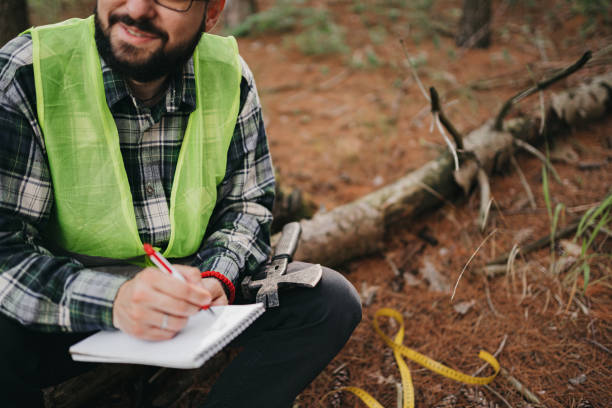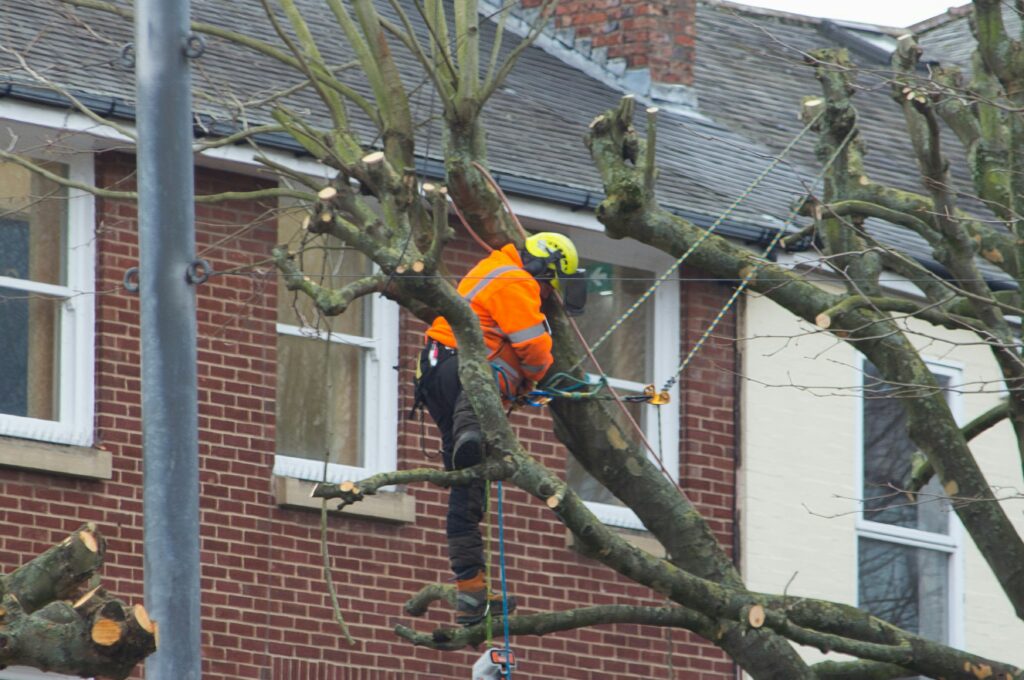Recognising and Responding to Threats From Hazardous Trees

A hazard tree is one that poses a threat of property damage or personal injury due to its structural defects. These can be caused by storm damage, fungal attack, climatic conditions or growth patterns.
Advanced decay is a key indicator that a tree is hazardous. New growth can mask decay and conceal internal weakness.
Trees stand as guardians, providing shade, shelter, and a sense of serenity. Yet, amidst their beauty lurks potential danger. Hazardous trees, marked by structural flaws, can become silent threats, jeopardising both property and lives. This guide delves into the nuances of recognising and mitigating these risks, ensuring safety in our urban jungles and rural retreats alike.
Physical Indicators
Trees with a lot of snags, cracks, and missing bark, especially along the trunk, indicate that the tree has significant internal problems. Trees with root systems that have been disrupted by construction, lowered soil levels, excavation, or other site changes, are also a risk factor as these conditions can affect the availability of oxygen to the roots.
Dead wood that has been weakened by rot can be a hazard as well. If it falls and hits a vehicle, house or other structure it can cause considerable damage. Even a small branch that breaks off but stays in the tree can pose a threat because it is no longer supported by the trunk and may fall at any time.
The deterioration of a tree can also be caused by environmental factors that urban trees often experience, such as poor soil conditions and pruning damage. If the damage is not addressed the tree’s lifespan will be shortened significantly.
Other physical indicators include a leaning or overgrown trunk or an uneven crown which means that the tree is not evenly supporting itself. The presence of fungus or mushroom growth on the exterior of the bark or an unusual coloration of the foliage is another sign that there are serious problems inside.
Environmental Threats
In addition to natural hazards, human activity also contributes to environmental threats that can be dangerous for humans. These include pollution, deforestation, global warming, ozone depletion and water scarcity. These threats lead to socioeconomic problems, political tension and even conflict.
Danger trees and hazard trees are those that are structurally unsound and positioned in a way that can cause problems like power outages, fires and injuries. They are usually the result of a combination of factors including improper pruning, age-related issues, insect infestation and soil conditions.
Other environmental threats that can make a tree hazardous include mushroom growth around the roots, fungus growing on the trunk or limbs and a general lean in the tree. These signs can indicate that the tree is dying and will probably not be able to support itself or fall over in a storm.
A dangerous or unhealthy tree that is close to structures, buildings or roadways should be evaluated regularly by an ISA-certified arborist. Corrective pruning and crown reduction can help reduce the risk posed by these trees. In addition, removing any objects within the hazard range of the tree is a good idea. Whether they are picnic tables, play equipment or a parked car, moving these items out of the tree’s range can help prevent them from being damaged by a fallen branch or the tree itself.

Human Involvement
Although some of the damage caused by hazardous trees may be unavoidable, there are many steps that homeowners can take to minimise the risk of injury or property loss. One of the most important is to regularly inspect the health and safety of the trees on their property. Observing branches that are shedding earlier than usual, branch brittleness, or any signs of decay can help to identify a dangerous tree before an accident occurs.
Homeowners can also protect their properties by relocating any movable objects such as lawn furniture or decks away from the hazard tree. If a homeowner suspects that a tree on their property is becoming dangerous, they should call a tree removal company for local tree removal services to evaluate the situation and determine the best course of action.
Despite the fact that humans and trees coexist in close proximity, most people don’t often consider how a tree’s health impacts their daily lives. Forests play a crucial role in human health and well-being by providing clean water, air, and habitat. They also reduce the threat of non-communicable diseases that cannot be transmitted from person to person, such as cardiovascular disease, diabetes, and chronic respiratory conditions.
The most common ways that trees can become hazardous include damage, age, and weather events. In Northeastern Ohio, severe storms can cause tree limbs to break or even fall. In addition, trees growing into power lines can be extremely dangerous and knock out power to thousands of homes.
Legal Issues
Trees in urban areas can become hazardous as a result of storm damage, fungal attack, climatic conditions or growth patterns. They may also become a threat due to their location, being close to buildings or power lines or being exposed in other ways such as through clearing, removal of adjacent vegetation and other forms of development.
A hazard tree is one that has structural defects which, when combined with the presence of people and/or property in close proximity to the defect, present a risk of injury or property damage in the event of a failure. Typically, the tree is weakened and in need of intervention for its continued health and safety.
Signs that indicate a problem with a tree include broken tops, extensive bark peeling or falling off, limbs that have been blown down or uprooted, basal scars, ant hills, woodpecker holes and internal decay. A trained arborist should be consulted for evaluation and treatment. Utilise the internet and search for ‘tree removal near me‘ or view website here if you live around Melbourne.
Owners of hazardous trees should be aware of the legal ramifications. If they know of the condition and fail to take reasonable steps to address it, they could be held liable for damage that results. A homeowner’s insurance policy may have exclusions for certain tree conditions, or a separate deductible for tree-related damage. A homeowner should consult a knowledgeable insurance agent for advice.
As guardians of our homes and communities, understanding the risks posed by hazardous trees is paramount. By recognising the signs of danger and taking proactive steps to mitigate risks, we safeguard our properties and the well-being of those around us. Through collaboration with certified arborists, vigilance in property inspections, and adherence to legal responsibilities, we foster a safer environment where humans and trees coexist harmoniously. In our efforts to navigate the complexities of urban and rural landscapes, let us remain steadfast in our commitment to preserving the beauty and safety of our natural surroundings, one tree at a time.